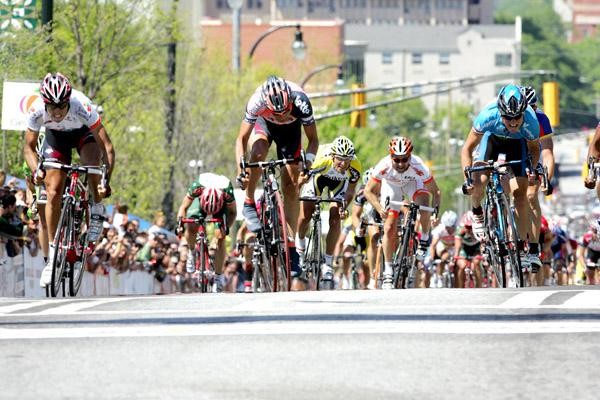Making the grade: Deciding Tour de Georgia invites
The Tour de Georgia recently announced the fifteen teams invited to take part in the sixth edition...

The Tour de Georgia recently announced the fifteen teams invited to take part in the sixth edition of the race. While there were not many surprises, the announcement of this and the other major North American races, such as the Tour of California, always comes with disappointment for some, elation for others and a bit of finger pointing - usually in the direction of Medalist Sports. The top two questions usually are, "Why them?" and "Why not more?" Cyclingnews' North American Editor Mark Zalewski spoke with Medalist Sports managing partner Jim Birrell and the team liaison for Medalist's events, Kevin Livingston, about the team invitation process.
Shocking as it may be to some, the process for deciding which teams to invite to races such as the Tour de Georgia, Tour of Missouri and Tour of California is not made with a dart board - nor is it quite as complex as deciding the 64 teams for the NCAA college basketball tournament known as "March Madness" - it is somewhere in between. A lot of external factors go into the decision calculus, including UCI regulations, budget considerations and, frankly, the number of hotel rooms available to house the race. So while the UCI allows for up to 200 riders in a road race, it is not always as easy as that.
"When you get up to the north Georgia mountains, housing is a premium," said Jim Birrell, managing partner of Medalist Sports and race director for the Tour de Georgia. "Cost is high, sure, but [there is limited] bed space, too. There just aren't many hotels there, period." This is one of the reasons why, after six years, the Tour de Georgia has added an additional day to its race, but not expanded beyond a limit of 15 teams for its peloton.
But beyond simple supply and demand limitations of hotel space, the cost involved in bringing more teams gets rather high, and the cost-benefit curve begins to flatten out. Adding to the problem, the Tour de Georgia is still riding a thin margin in terms of budget and sponsors, running a deficit last year, even after signing AT&T as a title sponsor in the 11th hour.
The costs of increasing the peloton also come in terms of safety, according to Birrell. "We have been very successful with a 15-team model, economically and from a safety point of view," he said. "If you have 15 teams that means 30 team cars in the caravan - if you increase the amount of teams you increase the length of the caravan, which gets more difficult to control."
Indeed, a race caravan with 30 team cars, plus six official's vehicles, eight organisation vehicles, 10 police vehicles - oh, and 120 cyclists - takes up between two and three miles of road on a rolling enclosure. That's when the race is neutral. When a break goes up the road, the road closure envelope increases to five or six miles long. Trying to keep civilian traffic off the road before the race comes by, or out of the gap between the leaders and the peloton, is an immense challenge - especially in a country with a general population not known for its understanding of closing roads for a bicycle race.
Read more on the difficulty of expanding the Tour de Georgia.
The latest race content, interviews, features, reviews and expert buying guides, direct to your inbox!